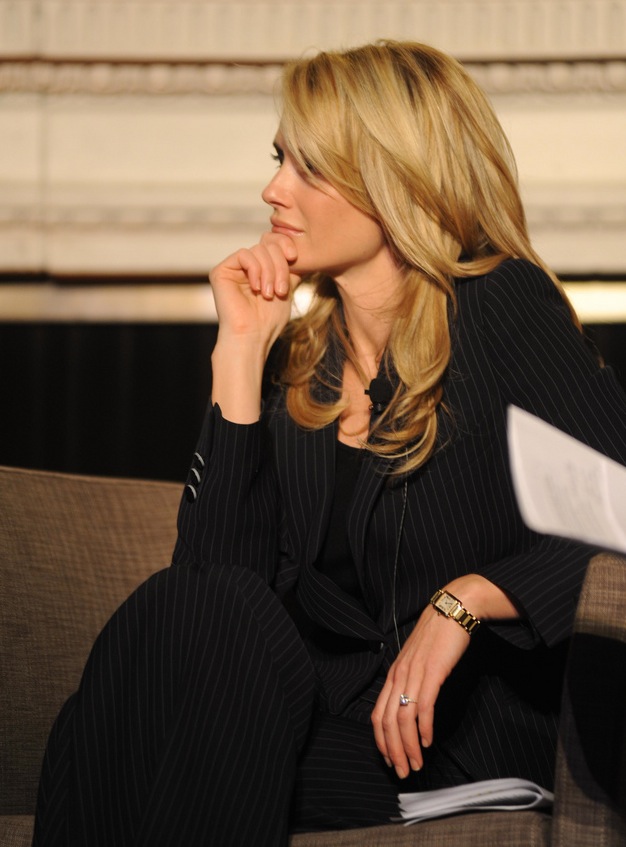
“I’D ASK EVERY MAN to think about what age they were, what was the context, when someone told you to be a man. That’s one of the most destructive phrases in this culture, I believe.” – Joe Ehrmann, The Mask You Live In
Jennifer Siebel Newsom, creator of the 2011 documentary Miss Representation, which delved into the objectification of women in media, turned her focus to masculinity in The Mask You Live In. Currently streaming on Netflix, the documentary dissects masculine norms from scientific, psychological, and personal angles peppered with relevant (and unfortunately uncited) statistics, drawing out an array of harmful consequences it creates for both men and women.
Toxic masculinity is a crucial area of feminist discourse – one that sometimes emphasizes the harm men perpetuate against women at the expense of acknowledging the extent to which men suffer under its constraints. The Mask You Live In looks at the men who have been shaped by their encapsulation within the masculine – and, inspiringly, who have deconstructed the self-concept thrust upon them to reshape themselves into more authentic and full human beings.
This framing around men’s suffering doesn’t come at the expense of acknowledging how women are impacted – there’s a segment dedicated to rape culture, and the devaluation of the “feminine” is a running thread throughout the film. Overall, the documentary suggests that toxic masculinity is at the root of both men’s and women’s oppression, and that both require our attention if either is to be adequately addressed.
The Challenge
One of the assets of the film is its incorporation of scientific and theoretical perspectives on gender. Psychologists and neuroscientists explain from different angles how the socialization theory of gender – the idea that gender norms are constructed and not innate – explains most of the differences between men and women. Since the first step to challenging these norms is the understanding that they are not biologically determined, that’s an invaluable component of the film.
The Suffering of Men
Throughout the film, the connection between masculine norms and suicide, violence, rape culture, homophobia, and misogyny are forged through both expert analyses and the personal stories of boys and men. We learn that boys tend to exhibit a “language shift” around the age of 15, when they describe a decline in intimate friendship with other boys, as emotions and intimacy become interpreted as “feminine”; at the same age, boys’ suicide rate climbs to five times that of girls.

Putting a fine point on the impact of withholding emotion, the film captures an activity led by educator Ashanti Branch, who leads a boys’ group at the school in which he teaches to encourage young men to get in touch with the aspects of themselves they feel compelled to hide. Branch hands out pieces of paper to the boys, and tells them one side is their “mask” – what they present to the world when they leave their houses. The other side is what they don’t show. Nearly all the boys’ hidden sides featured the word “pain.”
Branch’s powerful words to the young men showcase the activity’s attempt to challenge and redefine masculinity:
“How hard is that, to walk around every day with poker face on? This is not just an activity on paper. It’s about real stuff we deal with as young men and we hide behind because we don’t feel safe. … We’re only eight here. There are hundreds of young men out there and they are having the same experience … They have nobody even asking them, ‘What’s happening, man? What’s going on? How can I support you?’ I want each of you to be able to say what you need to say because if we’re ever gonna dig down to the depth of our pain… so we don’t end up another man in jail… we gotta have a safe place to deal with it. That’s brotherhood.”
Violence and Rape Culture
Educator Jackson Katz elaborates on the societal harms that amount from boys’ and men’s inability to lead full emotional lives, including that boys are taught not to reflect on, but to externalize, their pain. The film notes that the vast majority of mass shootings are perpetrated by men. Katz concludes that, while discourse around mass shootings tends to center on mental illness and other issues, gender is the “single most important factor.”
The Mask You Live In also draws a connection between masculinity and violence against women specifically. Political scientist Caroline Heldman describes it as “the great set-up”: Men’s identity and worth staked on rejecting feminine gender norms, setting them up to disrespect women. Violence against women, including rape – specifically given that part of being masculine is being always “on the prowl” and seeking sexual conquest – are emphasized as consequences of male gender norms.
Telling Stories, Flipping the Script
While the documentary spends ample time emphasizing how deeply rooted and pervasive the pressures and impacts of traditional notions of masculinity are, it offers glimmers of hope through stories of men who have challenged the norm within themselves, usually with the help of other men.
In addition to Branch’s boys’ group, one of the most powerful depictions of men examining masculinity in the film takes place in the San Quentin Juvenile Lifers’ Program (SQJLP). There, men in the Kid CAT (Creating Awareness Together) program participate in activities, such as the “Man Box” activity, and in dialogue around their upbringing, self-concept, the violence they perpetrated, and what they see as possible for themselves.
The scenes featuring the Kid CAT activities don’t showcase “hardened criminals” or “tough guys”; these men are emotive and articulate. They are open and vulnerable with one another. One of the participants, Cleo, tells the group facilitator that he had felt incomplete, but, after being part of the group and doing “the work,” Cleo said: “I feel whole.”

Director Jennifer Siebel Newsom
The Mask You Live In places emphasis on the role of teachers, parents, and coaches – and particularly men – in checking their own preconceived notions about masculinity. It also makes the onus theirs to show the boys and men around them that they aren’t destined to be limited by traditional notions of masculinity – that their lives will be better and more whole if they are not.
It would have been nice if the film included more concrete resources, such as how to find the full “Man Box” activity (linked above). Though it provided evidence that the boys and men of today can grow, it didn’t give much detail concerning how that can happen outside specialized groups dedicated to that work, or how such “safe spaces” could be facilitated.
Still, the film provides an expansive analysis of masculine norms and their far-reaching impacts. It could encourage boys and men to begin the process of analyzing their self-concept and challenging the men around them to do the same. It can provide tools to help women better understand the unique pressures facing men, and guide educators, parents, and coaches to start thinking about what they can do to challenge the harm that toxic masculinity perpetuates.
Toxic masculinity affects everyone. We can’t understand and transform it if we don’t open ourselves to the suffering of those in whom it unfolds. Watch the trailer here.



-300x169.jpg)












